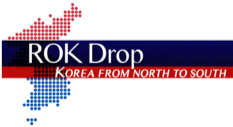DMZ Flashpoints: The 1967 Camp Liberty Bell Attack
Prelude to Attack
There have been many flashpoints on the Korean Demilitarized Zone (DMZ) over the years with patrols being ambushed and even an American barracks being bombed, but there has probably never been a North Korean attack as brazen as the ambush on Camp Liberty Bell. On the afternoon of August 28, 1967 soldiers of Charlie Company 76th Engineer Battalion had just returned to Camp Liberty Bell for dinner after a hard day of working on improving the main road that travels north to the Korean armistice village of Panmunjom located 2.3 kilometers north of the camp.

Map of the DMZ via The Advocate website

Chow Hall Ambush
Some soldiers were sitting down on tables eating while many others were still waiting in line to get their food. As the soldiers went through their daily ritual to get their chow shots suddenly rang out and bullets smashed into the chow hall tent. Soldiers ran for cover and others turned over the chow hall tables in hopes they would provide adequate cover from the incoming bullets.

Hill overlooking Camp Liberty Bell where North Korean commandos attacked the camp in 1967. Image via the 2ID Association website.
The soldiers outside also raced for cover and spotted the gunmen on a 100 meter hill overlooking Camp Liberty Bell firing down on the American soldiers. The camp’s quick reaction force (QRF) raced to prepare a counterattack against the enemy. With shots still ringing out, the quick reaction force advanced up a road leading to the top of the hill to intercept the gunmen. The QRF took two casualties as they advanced up the road when one of the American soldiers stepped on a landmine planted by the North Korean commandos. By the time the QRF was able to get to the top of the hill the commandos had fled. The QRF estimates that they saw about 9-12 North Korean commandos on the hill and found over 1,000 rounds of unspent Soviet 7.62 ammo left at the firing position on the hill. The QRF followed the commandos’ tracks leading from the position and determined they had successfully crossed back over the DMZ to North Korea.

In this modern day Google Earth image you can see the hill that rises above the current Camp Bonifas where Camp Liberty Bell at the time time of the attack was located. The proximity of the DMZ fence made escape very easy for the North Korean commandos.
The aftermath of the attack saw Camp Liberty Bell with pools of blood splattered across the compound mixed with the shouts of pain and suffering from the wounded. Unfortunately three soldiers could not shout out in pain because they lied dead on the ground after the North Korean attack. The initial dead included one American, Specialist Michael Vogel and two Korean KATUSA soldiers that died in the unprovoked attack. Private First Class Curtis Rivers was seriously wounded and would later die of his wounds raising the death toll further.



Attack Aftermath
The attack was considered the most serious attack since the signing of the Korean armistice agreement in 1953 that involved an area south of the demilitarized zone. The attack followed two North Korean ambushes launched on August 10, 1967 that killed three US soldiers.

Photo of the Camp Liberty Bell front gate in 1973 via The Advocate website.
The attack on Camp Liberty Bell proved even more deadly with four soldiers dead and many more wounded. In total twenty-six people were wounded in the attack that included fourteen US soldiers, nine South Korean soldiers, and three Korean civilian employees. The United Nations Command made the usual protests against the North Koreans during a meeting a Panmunjom and of course the North Korean communists denied all knowledge of the attack. This attack would be one in a long series of attacks that would occur against frontline forces stationed in Korea in what would eventually come to be known as the “DMZ War“.




I was there Aug.28 1967.Poor leadership all weapons were locked in arms room
I’m looking for anyone that was stationed at camp liberty during the attack. My name is James Balay and I was there. The VA is saying that agent Orange wasn’t sprayed but I know we did it 3 days after the attack. Please contact me at ,
Jbalaynev@aol.com . With anything that can help my claim. Thanks Jim Balay